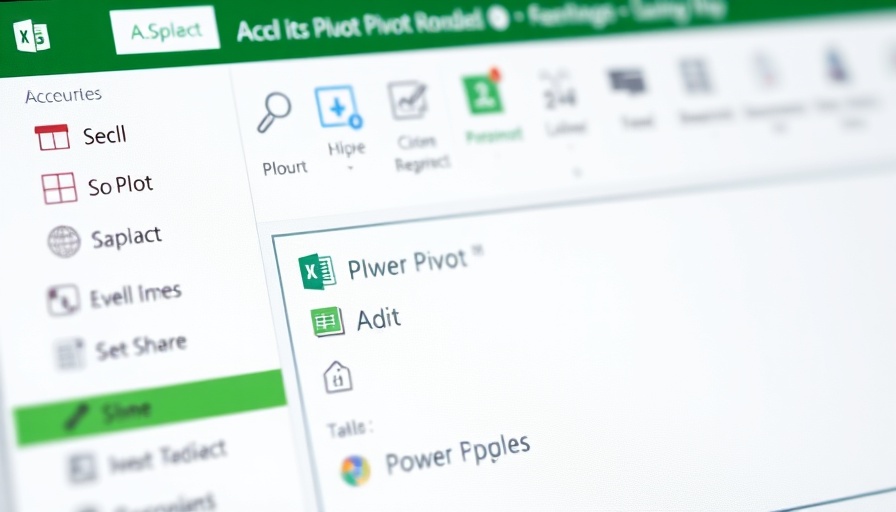
How Power Pivot Changes the Game for Digital Nomads
As a digital nomad, efficiently managing your data can often be a monumental challenge. Traditional tools like Excel's PivotTables might seem handy, but they come with limitations that can hinder your productivity. Enter Power Pivot, a game-changing tool that transforms the way you handle data across multiple sources, placing you one step ahead in the fast-paced digital nomad lifestyle.
Understanding the Limitations of PivotTables
For years, PivotTables served as a reliable option for summarizing complex data. However, as the nature of work evolved, so did the demands of data analysis. PivotTables usually only function with single data sources, which means that if you need to analyze data from different tables or spreadsheets, you’re likely to face headaches trying to reconcile information manually. Often, this meant spending countless hours correcting broken references and updating formulas. All these issues can leave you squinting at rows of numbers instead of focusing on what matters most—making decisions based on your data insights.
Power Pivot: A Step Into the Future of Data Analysis
Power Pivot addresses these shortcomings by treating your entire workbook as a relational database. This means you can import multiple related tables and automatically define relationships between them, significantly enhancing your workflow. Imagine the time saved as you skip frustrating steps like repetitive manual calculations. With Power Pivot, adding new data is just a click away; a simple refresh operation updates all analysis, making it faster and more efficient.
Setting Up Power Pivot
Getting started with Power Pivot is straightforward. To access it, simply go to Excel’s add-ins menu and enable Power Pivot, after which a new tab appears in the ribbon. This added functionality gives you access to tools that completely revolutionize how you visualize and analyze your data. With Power Pivot, you can build a robust data model that empowers your decision-making process.
Relational Model Simplified: Making Complex Analysis Easy
Once you dive into Power Pivot, you'll quickly notice how it simplifies the process of data analysis. After importing datasets, you can define relationships between common fields like Customer_ID or Order_ID. Rather than conducting tedious manual lookups, Power Pivot combines these datasets into unified reports, allowing you to focus on analysis without cumbersome distractions.
Data Cleaning: The First Step to Success
Before leveraging the full power of Power Pivot, ensure that your data is clean and well-prepared. I personally advocate using Power Query for this purpose, as it scales better and saves time during the data sanitization process. A clean dataset ensures that the insights you generate are reliable and actionable, reflecting the true state of your work.
Potential for Collaboration
For digital nomads often collaborating with remote teams, Power Pivot simplifies joint projects and analyses. By allowing each team member access to interconnected data sources, insights can be shared more readily among team members. This capability fosters more efficient communication and allows for a collective approach to problem-solving.
Conclusion: Why You Should Transition to Power Pivot Today
In conclusion, transitioning from traditional PivotTables to Power Pivot not only streamlines your data analysis workflow but also enhances your overall productivity. For those of us navigating the complexities of remote work, this powerful tool is essential for making informed decisions quickly. Don’t let inefficient data handling hold you back—embrace Power Pivot today and elevate your remote work experience.
Embrace the shift to Power Pivot and experience the difference it can make in your productivity and analysis. No more squinting at spreadsheets! Transform how you work with data and ensure you're always ahead of the game.
 Add Row
Add Row  Add
Add 




Write A Comment